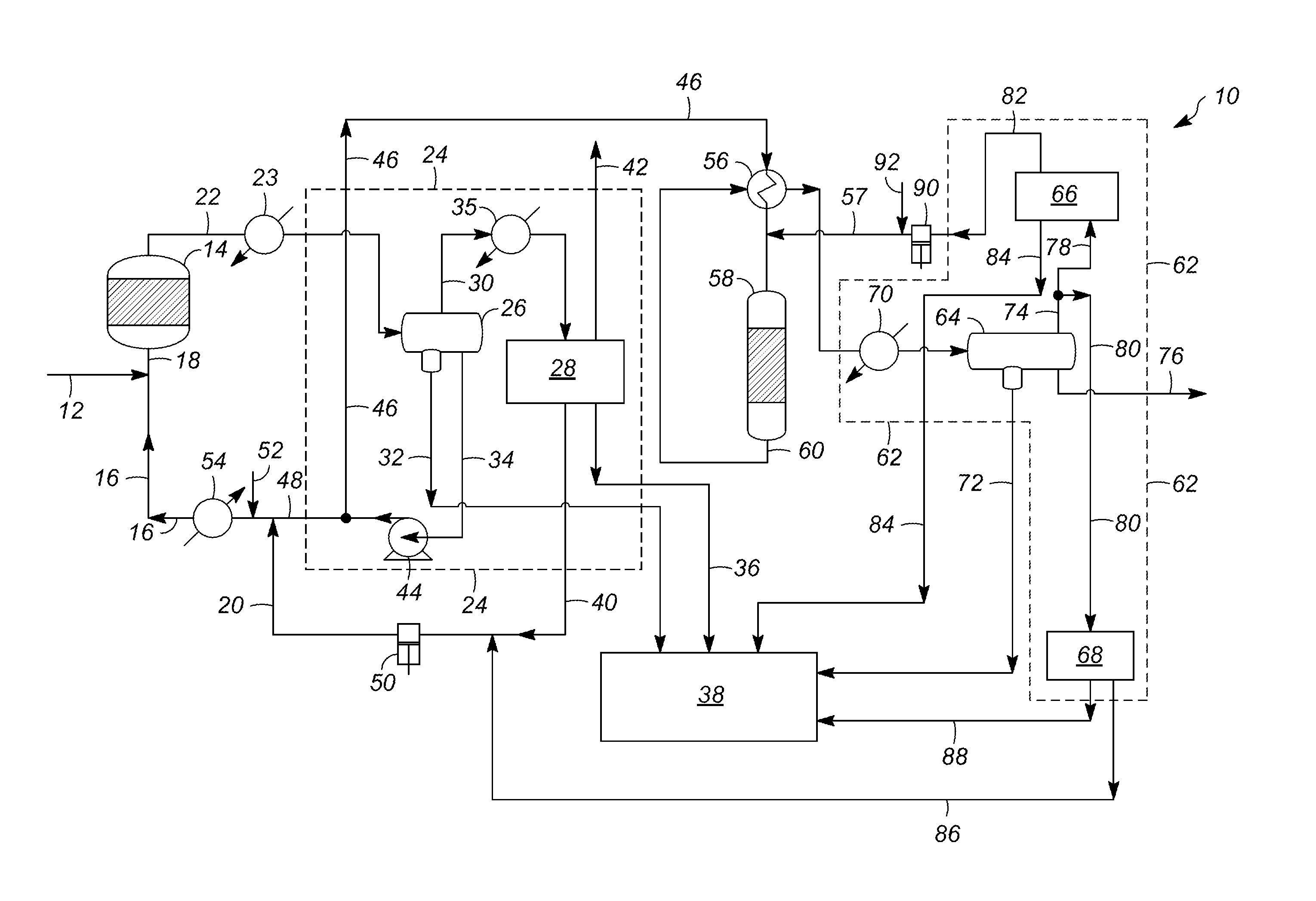Methods for deoxygenating biomass-derived pyrolysis oil
a biomass-derived pyrolysis oil and pyrolysis oil technology, which is applied in the direction of biofuels, biofuels, organic chemistry, etc., can solve the problems of limiting the utilization of biomass-derived pyrolysis oil as a biofuel, rapid plugging or fouling of processing catalysts, and complex nature of biomass-derived pyrolysis oil
- Summary
- Abstract
- Description
- Claims
- Application Information
AI Technical Summary
Benefits of technology
Problems solved by technology
Method used
Image
Examples
Embodiment Construction
[0011]The following Detailed Description is merely exemplary in nature and is not intended to limit the invention or the application and uses of the invention. Furthermore, there is no intention to be bound by any theory presented in the preceding background or the following detailed description.
[0012]Various embodiments contemplated herein relate to methods for deoxygenating a biomass-derived pyrolysis oil. Unlike the prior art, the exemplary embodiments taught herein produce a low-oxygen biomass-derived pyrolysis oil effluent by contacting a heated diluted pyoil feed stream with a deoxygenating catalyst in the presence of hydrogen at hydroprocessing conditions to partially deoxygenate the heated diluted pyoil feed stream. It should be appreciated that while the deoxygenated oil produced according to exemplary embodiments of the present invention are generally described herein as a “low-oxygen biomass-derived pyrolysis oil” or an “ultralow-oxygen biomass-derived pyrolysis oil,” the...
PUM
| Property | Measurement | Unit |
|---|---|---|
| temperature | aaaaa | aaaaa |
| temperature | aaaaa | aaaaa |
| temperature | aaaaa | aaaaa |
Abstract
Description
Claims
Application Information
 Login to View More
Login to View More - R&D
- Intellectual Property
- Life Sciences
- Materials
- Tech Scout
- Unparalleled Data Quality
- Higher Quality Content
- 60% Fewer Hallucinations
Browse by: Latest US Patents, China's latest patents, Technical Efficacy Thesaurus, Application Domain, Technology Topic, Popular Technical Reports.
© 2025 PatSnap. All rights reserved.Legal|Privacy policy|Modern Slavery Act Transparency Statement|Sitemap|About US| Contact US: help@patsnap.com


